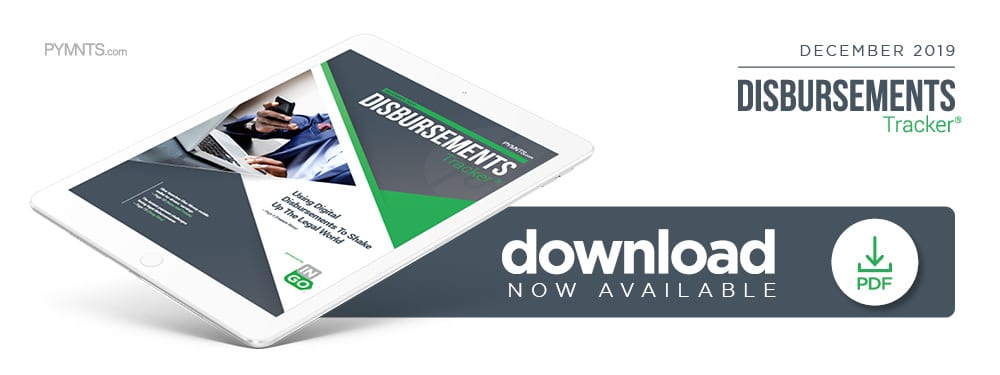Why Changes Are Slow In Coming To Legal Disbursements

Businesses and government institutions are adapting to instant payments as more consumers are requesting them. The latest PYMNTS Disbursement Satisfaction Report revealed that more than 24 percent of government disbursements were made through instant rails in 2019. Paper checks still dominate in some areas, however, despite the availability of digital payment networks that can move money much faster.
One such area in which instant payments remain out of reach is the legal system, as claimants still largely receive their settlements or disbursements via check. These paper-based payment methods can inconvenience customers and cause frictions, but law firms and their supporting partners are often hamstrung when it comes to replacing them. It is not as easy for them to innovate their payment processes as it is for other types of businesses, as they must fulfill strict requirements before making payments.
Such needs make payment speed a low priority for legal firms, even though consumers involved in court cases are often frustrated and confused about how to receive their settlements. Some legal cases can take six weeks or longer to settle, and only then will funds be disbursed. Numerous steps must be taken before legal checks can be sent via mail, and upgrades to how consumers receive disbursements are necessary before additional options can move forward.
Legal system complexities stall instant payment adoption
It is necessary to examine legal disbursements to understand the payments innovation challenges they face. These disbursements are paid with funds from one designated party to another, and such payments are largely facilitated by attorneys rather than the companies or individuals being tapped for money.
Checks are highly popular for legal disbursements because the release of funds happens in two stages. Party one is first ordered to release the money, which must reach the attorney as the intermediary before it goes to the second party. The resulting delays can frustrate clients who require funds to address legal fees, medical bills and other financial pain points, as is often the case for personal injury or negligence claims. Personal injury claimants must wait until their insurance companies have authorized release forms before the checks are signed and passed to their lawyers. Attorneys then often place the funds into escrow accounts after removing their own fees, then they finally disburse money to their clients — after insurance companies have shown they have the money to pay.
Collection processes can also differ depending on the type of lawsuit. Class-action suits or federal settlements for incidents like large-scale data breaches come with completely different disbursement rules, though claimants in all cases suffer from lengthy wait times for funds. Victims of the 2017 Equifax breach, for example, are still wading through the legal steps required before they can receive checks of $125 apiece.
These rigorous legal requirements are thus overshadowing how quickly disbursements are paid out. Certain payouts must also be placed in escrow regardless of payment method, meaning consumers will still have to deal with seemingly unexplainable delays, even as digital disbursements become fully integrated into the legal world.
Instant payments will be slow to come to legal disbursements
Legal settlement recipients are frustrated by the seemingly endless hoops through which they must jump to receive simple checks, but checks take additional work once they have reached end customers. They clear a few days after they are deposited, unlike some newer digital payment methods, meaning consumers who have waited months to open their mailboxes for paper checks must go through yet another waiting period.
Legal firms seem aware of how irritating the process can be for claimants, particularly those who are not versed in the legal complexities governing such disbursements. Efforts to expedite payments often focus on shortening pre-payment steps rather than the payments process itself, which can do little to ease consumers’ frustrations. One such example is the DoNotPay app, which was originally launched to help Equifax victims file claims regarding the breach. The app allows users to simply fill in the details of potential claims before “swiping right” on suits that match, but it does not have the capability to make disbursements themselves move instantly.
Instant payments would undoubtedly make the legal disbursement processes more convenient for all parties involved, but innovation will require careful handling. Many of the space’s strict regulations cannot be shrugged off in the name of quick and easy innovation, meaning the familiar technological adage of “move fast and break things” cannot be applied.

